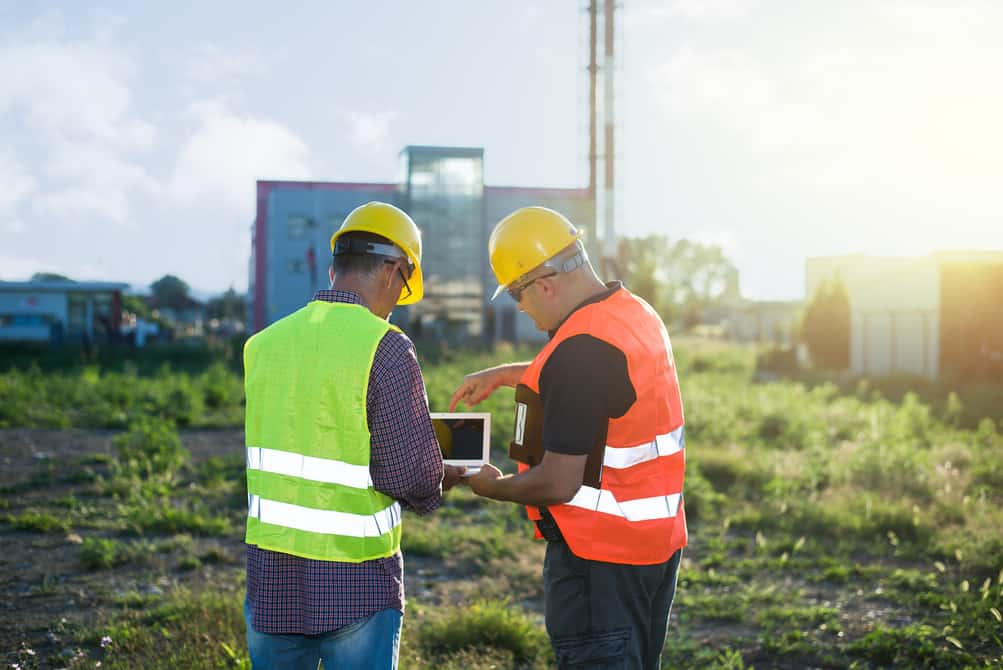Concentrated Solar Power (CSP) technology has emerged as a promising solution in the renewable energy landscape. It offers the potential for large-scale, dispatchable, clean energy generation. Understanding the intricacies of building a CSP plant becomes increasingly important as the world shifts towards sustainable power sources.
This guide will cover the key aspects of constructing a CSP facility, from technology selection to operational considerations.
Types of CSP Technologies
Before delving into the construction process, it’s crucial to understand the various CSP technologies available. Each type has its unique advantages and applications:
Parabolic Trough Systems
These systems use curved mirrors to focus sunlight onto a receiver tube containing a heat transfer fluid. They are the most mature and widely deployed CSP technology. Parabolic troughs are known for their reliability and proven track record in commercial operations.
Power Tower Systems
Also known as central receiver systems, these use a field of mirrors (heliostats) to concentrate sunlight onto a receiver atop a tower. They can achieve higher temperatures and efficiencies than parabolic troughs. Power towers offer the potential for higher overall system efficiency and better energy storage capabilities.
Linear Fresnel Reflector Systems
These use long, flat or slightly curved mirrors to focus sunlight onto a fixed receiver above them. They are simpler and potentially less expensive than parabolic troughs. Linear Fresnel systems have lower capital costs but typically achieve lower efficiencies than other CSP technologies.
Dish/Engine Systems
These use a parabolic dish of mirrors to focus sunlight onto a receiver at the focal point. They are modular and can be used for smaller, distributed applications. Dish/engine systems are highly efficient but have seen limited commercial deployment due to their complexity and maintenance requirements.
Site Selection and Planning
Choosing the right location is paramount to the success of a CSP plant. Key factors to consider include:
Solar Resource Assessment
CSP plants require high direct normal irradiance (DNI) levels. Regions with clear skies and minimal cloud cover are ideal. Accurate long-term solar resource data is crucial for predicting plant performance and economic viability.
Land Requirements and Topography
CSP plants need large, flat areas. The land requirements vary depending on the chosen technology and the plant’s capacity. Typically, CSP plants require 5-10 acres per megawatt of capacity, with some variation based on the specific technology and storage capacity.
Water Availability
While some CSP designs use dry cooling, many still require significant water for cooling and mirror cleaning. Ensuring adequate water supply is crucial. Water consumption can be a significant environmental and economic consideration, especially in arid regions where CSP is often most viable.
Grid Connectivity
Proximity to existing transmission infrastructure is vital for cost-effective power distribution. The cost of building new transmission lines can significantly impact the overall project economics.
Environmental Considerations
The impact on local ecosystems, wildlife, and cultural resources must be carefully assessed and mitigated. This often involves conducting detailed environmental impact assessments and working closely with local stakeholders and regulatory bodies.
See Concentrated Solar Power: Addressing Water Usage and Environmental Concerns for more information.

Key Components of a CSP Plant
A typical CSP plant consists of several critical components:
Solar Field
This comprises the mirrors or reflectors that concentrate sunlight. The design and layout of the solar field are crucial for optimal performance. The solar field typically represents the most significant portion of a CSP plant’s capital cost.
Receivers
These absorb the concentrated sunlight and transfer the heat to the heat transfer fluid. Receiver design is critical for maximizing efficiency and minimizing heat losses.
Heat Transfer Fluid System
This circulates the fluid (often synthetic oil or molten salt) that carries the heat from the receivers to the power block. The choice of heat transfer fluid impacts the overall system efficiency and operating temperature range.
Thermal Energy Storage
Many CSP plants incorporate thermal storage systems, often using molten salt, to enable power generation during cloudy periods or at night. Thermal storage is a key advantage of CSP over other renewable technologies, allowing for dispatchable power generation.
Power Block
This includes the turbines and generators that convert thermal energy into electricity. The power block in a CSP plant is similar to that used in conventional thermal power plants, which can help reduce costs and improve reliability.
For a deeper dive into the latest technological advancements in these components, check out this comprehensive guide on concentrated solar power innovations.
https://www.youtube.com/watch?v=YC_CZ1nObbk
Construction Process
Building a CSP plant involves several stages:
Site Preparation
This includes clearing the land, leveling the ground, and establishing access roads and other infrastructure. Proper site preparation is crucial for ensuring the long-term stability and performance of the plant.
Solar Field Assembly
The mirrors or reflectors are installed and aligned with precision. This is often the most time-consuming part of construction. Accurate alignment is critical for maximizing the plant’s efficiency.
Receiver and Heat Transfer System Construction
The receivers are installed, and the heat transfer fluid piping system is laid out. This stage requires careful coordination to ensure proper solar field and power block integration.
Power Block Installation
The turbines, generators, and associated equipment are set up. This stage often involves working with specialized equipment suppliers and requires careful planning to ensure proper integration with other plant systems.
Integration of Thermal Storage Systems
If included, the thermal storage tanks and associated systems are constructed and integrated with the rest of the plant. The size and design of the storage system significantly impact the plant’s ability to provide dispatchable power.
Control Systems Implementation
Advanced control and monitoring systems are installed to ensure efficient operation of the plant. These systems are crucial for optimizing performance and managing the complex interactions between different plant components.
Operational Considerations
Once constructed, a CSP plant requires careful management:
Control Systems and Automation
Sophisticated control systems optimize the plant’s performance based on solar conditions and energy demand. These systems must handle rapid changes in solar input and grid demand.
Maintenance Requirements
Regular cleaning of mirrors, inspection of heat transfer systems, and maintenance of the power block are essential for optimal performance. Developing efficient cleaning methods and maintenance schedules is crucial for maximizing plant availability.
Performance Monitoring and Optimization
Continuous monitoring and data analysis help identify areas for improvement and maintain peak efficiency. This often involves advanced analytics and predictive maintenance techniques to minimize downtime and maximize energy production.
Economic Aspects
The economic viability of a CSP plant depends on several factors:
Capital Costs
These include equipment, construction, and grid connection costs. CSP plants typically have higher upfront costs than other renewable technologies, which is often offset by their ability to provide dispatchable power.
Operational Costs
There are ongoing expenses for maintenance, staff, and any required inputs (e.g., water). Optimizing these costs is crucial for long-term economic viability.
Financing Options
Various financing models are available, including public-private partnerships and green bonds. The availability of long-term power purchase agreements can significantly impact a project’s ability to secure financing.
Levelized Cost of Electricity (LCOE)
This metric helps compare the cost-effectiveness of different energy technologies. While CSP’s LCOE has historically been higher than some other renewables, it continues to decrease as technology improves and deployment increases.
For those interested in the financial aspects of CSP projects, this concentrated solar power investment guide provides valuable insights into the economic considerations and potential returns.

Environmental Impact and Mitigation
While CSP is a clean energy technology, it’s not without environmental considerations:
Land Use
CSP plants require significant land area, which can impact local ecosystems. Careful site selection and habitat conservation measures are essential. Some projects have successfully integrated agricultural or other compatible land uses within the solar field.
Water Consumption
Implementing water-efficient cooling technologies and responsible water management practices can minimize the impact on local water resources. While less efficient, dry cooling technologies can significantly reduce water consumption in water-scarce regions.
Visual Impact
The large-scale nature of CSP plants can alter landscapes. Thoughtful design and community engagement can help address these concerns. Some projects have incorporated visitor centers or educational facilities to increase public acceptance and understanding of the technology.
Conclusion
Building a concentrated solar power plant is a complex but rewarding endeavor. As technology advances and costs decrease, CSP is poised to play an increasingly important role in the future of clean energy. By carefully considering all aspects of plant design, construction, and operation, we can harness the sun’s power more efficiently and sustainably than ever before.
The future of CSP looks bright, with ongoing innovations promising to improve efficiency further and reduce costs. As we refine this technology, CSP will undoubtedly be a key player in our transition to a renewable energy-powered world. Its ability to provide dispatchable power and integrate with other renewable technologies makes it a valuable component of a diverse and resilient clean energy portfolio.
FAQS
What is Concentrated Solar Power (CSP), and how does it generate electricity?
Concentrated Solar Power (CSP) is a technology that harnesses the sun’s energy to generate electricity:
- CSP systems use mirrors to focus sunlight onto a central receiver, creating high temperatures
- The concentrated heat is used to produce steam, which drives a turbine to generate electricity
- This process allows CSP plants to convert solar energy into usable power on a large scale
- CSP is a promising solution for renewable energy production, particularly in areas with abundant sunlight
What are the key steps in building a CSP plant?
Building a CSP plant involves several crucial stages, from planning to operation:
- The first step is careful site selection, considering factors like solar radiation, land availability, and access to transmission lines
- Designers then choose the appropriate CSP technology, such as heliostats or parabolic troughs, and create a plant layout that optimizes sunlight capture
- Securing funding and obtaining necessary permits is essential before construction can begin
- During construction, the solar field, power block, and storage systems are installed and integrated
- After commissioning, the plant undergoes performance testing and begins generating electricity
What are the economic and environmental benefits of CSP plants?
CSP plants offer significant economic and environmental advantages:
- They generate clean, renewable electricity without emitting greenhouse gases or pollutants
- CSP projects create jobs in construction, operation, and maintenance, stimulating local economies
- By reducing reliance on fossil fuels, CSP helps mitigate climate change and improve air quality
- CSP plants can provide dispatchable power, meaning they can store and release energy as needed to meet demand
What challenges must be addressed when designing a CSP plant?
Designing a CSP plant involves overcoming various challenges:
- Selecting the most suitable technology and layout for the specific site conditions
- Optimizing the solar field to maximize energy capture while minimizing land use and costs
- Ensuring efficient heat transfer and storage to maintain high performance
- Integrating the CSP system with the electrical grid and meeting power quality standards
- Addressing environmental concerns, such as water use and impact on local ecosystems
How important is site selection for a successful CSP project?
Choosing the right location is crucial for the success of a CSP plant:
- The site should have high levels of direct solar radiation to maximize energy production
- Sufficient land must be available for the solar field and associated infrastructure
- Access to water resources is necessary for cooling and steam generation
- Proximity to electrical transmission lines is essential for delivering power to the grid
- Environmental and social factors, such as wildlife habitats and community acceptance, must also be considered
What role does performance monitoring play in CSP plant operation?
Performance monitoring is critical for ensuring the efficient and reliable operation of a CSP plant:
- Sensors and data acquisition systems track key parameters, such as solar radiation, temperature, and power output
- This data is analyzed to identify any deviations from optimal performance and guide maintenance decisions
- Regular monitoring helps detect and address issues early, preventing costly downtime and energy losses
- Performance data also informs future design improvements and optimizations for CSP technology

Leave a Reply